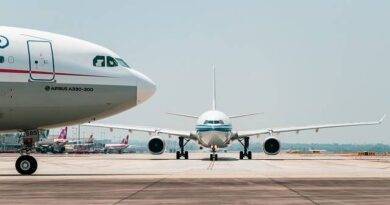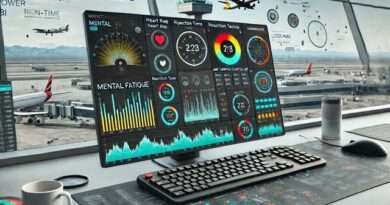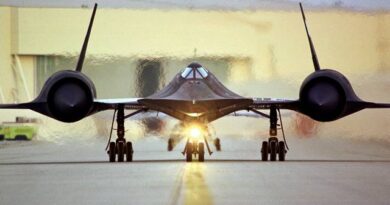Shell Model in Aviation
In the dynamic realm of aviation, where precision and safety are paramount, the Shell Model stands as a cornerstone of human factors analysis. Developed by Elwyn Edwards and further refined by Frank Hawkins, this conceptual framework provides a comprehensive lens through which to examine the interplay between humans and the aviation system. The ICAO Shell Model in aviation is is described in ICAO Doc 9859, Safety Management Manual . Shell diagram is to illustrates this conceptual model using blocks to represent the different components of human factors. As described in model contains four components:
A) Software (S) (procedures, training, support, etc.);
B) Hardware (H) (machines and equipment);
C) Environment (E) (the working environment in which the rest of the L-H-S system must function); and
D) Liveware (L) (humans in the workplace).
The SHELL model shows how these elements interact:
- A pilot (L) struggling with fatigue (E) might misinterpret a procedure (S).
- Faulty equipment (H) could lead to stress (E) for the mechanic (L).
- Confusing software instructions (S) might cause a controller (L) to make a mistake.
The beauty of SHELL? It doesn’t blame individuals. It highlights the interconnectedness of the system, prompting us to look beyond the “pilot error” headline.
Humans – Front Line of Wariors
In the center of the model are the humans who work at the front line of operation. Humans do not interface perfectly with the various components of the world in which they work. To avoid tensions that may compromise human performance, the effects of irregularities at the interfaces between the various SHELL blocks and the central Liveware block must be understood. To avoid the stress in the system other blocks of the model must be optimized carefully. The SHELL system is very useful tool for visualizing interfaces between the various components of the aviation system:

Liveware-Hardware (L-H). The L-H interface refers to the relationship between the human and the hardware (equipment, machines, etc,).
The interaction between liveware and hardware is one interactive element of the SHELL concept. When discussing human-machine systems, this interface is the one that is most frequently mentioned: designing seats to fit the human body’s sitting characteristics, designing displays to match the user’s sensory and information processing characteristics, and designing controls with the right movement, coding, and placement.
Hardware, for instance, in air traffic control, refers to the actual components of the environment under control, particularly those that have to do with the work stations. A hardware element that interacts with liveware is the press-to-talk switch, for instance. The switch will have been built to fulfill a variety of assumptions, including the likelihood that the controller will have a live line to talk on when it is pressed. Similar to this, switches should have been placed in places that controllers can readily access in a variety of circumstances, and operating equipment shouldn’t obstruct viewing displayed information or using other devices that might need to be utilized simultaneously.
Liveware-Software (L-S). The L-S interface is the relationship between the human and the supporting systems (regulations, checklists, manuals, computer software, standard operating procedures (SOPs))
All of the laws, rules, regulations, orders, SOPs, practices, and conventions, as well as the typical method that things are done are collectively referred to as software. Software is increasingly used to describe computer-based programs created to run automated processes.
It’s crucial to make sure the software, especially when it comes to regulations and processes, can be executed in order to produce a safe, effective functioning between the liveware and software. Additionally, phraseologies that are prone to errors, are unclear, or are overly complicated need to be addressed. Problems with symbology and conceptual system design are more abstract.
Liveware-Liveware (L-L). The L-L interface is the relationship among persons in the work environment.
Leadership, cooperation, teamwork, and personality relationships are all important aspects of this interface. It consists of programs like Line Oriented Flight Training (LOFT), Crew Resource Management (CRM), and the ATC counterpart, TRM.
- Liveware-Environment (L-E). This interface involves the relationship between the human and both the internal and external environments. Internal workspace environment includes noise, light, air quality, temperature, vibration. External workplace environments include weather factors, aviation infrastructure and terrain. The aviation work environment includes disturbances to normal biological rhythms and sleep patterns. Additional environmental aspects may be related to organizational attributes that may affect decision making processes and create pressures to develop “work – around”s or minor deviations from standard operating procedures.
The physical environment—temperature, weather, etc.—within which airplanes operate is referred to as the liveware-environment interface. This refers to those interactions that may not be under the direct control of people. The design of safeguards for humans or machinery, including the creation of protective systems against radiation, noise, and lighting, has occupied a significant portion of the human factor development in this field. A wide range of diverse disciplines, including environmental studies, physiology, psychology, and even physics and engineering, are involved in the proper matching of the liveware-environment interactions.
According to SHELL Model, a mismatch between liveware and other blocks can cause human error.
Shell Model Disadvantages:
This SHELL block diagram does not cover the interfaces which are outside human factors (hardware-hardware; hardware-environment; software-hardware) and is only intended as a basic aid to understanding human factors.
Shell Model Advantages:
The diagram is useful in giving a visual sense of how elements of these systems interact and affect one another and in creating an awareness of how these factors influence ones decision making process. It is useful to reduce errors and prevent accidents and incidents.
Human factors knowledge may result in better quality, a setting that maintains worker and aircraft safety, and a staff that is more engaged and accountable. More precisely, reducing even little errors can have quantifiable advantages such as cost savings, a decline in work-related accidents, and a decline in more serious incidents that can be linked to human error.
Brief History
Shell model was first developed by Elwyn Edwards in 1972, with a modified diagram to illustrate the model developed by Frank Hawkins in 1975. Hawkins (1993) modified Edwards’ model to include the interactive nature of the person to person relationship (Liveware-Liveware) and called it SHELL.
References and Further Reading
- International Civil Aviation Organization (ICAO) SHELL Model: https://skybrary.aero/articles/icao-shell-model
- UK Civil Aviation Authority (CAA) Human Factors Guidance: https://publicapps.caa.co.uk/docs/33/cap719.pdf
for more articles click.



Human factors in aviation are very interesting subject because it is one of the most significant opportunity to make aviation both safer and more efficient. It is not easy to explain all human factors components because it is comprised of many disciplines and diversity in approach by researchers. In this article, I will explain a conceptual model of human factors [ the SHEL concept].